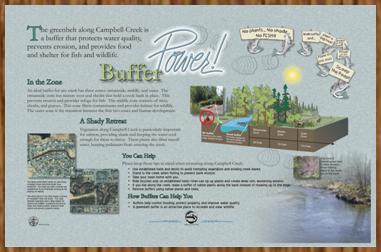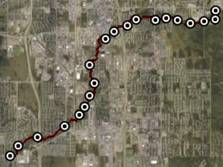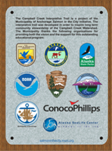Buffer Power Display - 61° 10' 24" N, 149° 51' 52" W

■



|
 Visit the Trail Visit the Trail(Google Earth Required) |  Site Navigation |
 
|
 
|
|
Buffer Power Display - 61° 10' 24" N, 149° 51' 52" W |
 ■ |
|||||


|
||||||
|
|
Buffer Power!The greenbelt along Campbell Creek is a buffer that protects water quality, prevents erosion, and provides food and shelter for fish and wildlife.In the ZoneAs illustrated on the panel, an ideal buffer for any creek has three zones: streamside, middle, and outer. The streamside zone has mature trees and shrubs that hold a creek bank in place. This prevents erosion and provides refuge for fish. The middle zone consists of trees, shrubs, and grasses. This zone filters contaminants and provides habitat for wildlife. The outer zone is the transition between the first two zones and human development. A Shady RetreatVegetation along Campbell Creek is particularly important for salmon, providing shade and keeping the water cool enough for them to thrive. These plants also filter runoff water, keeping pollutants from entering the creek. You Can HelpPlease keep these tips in mind when recreating along Campbell Creek:
How Buffers Can Help You
|